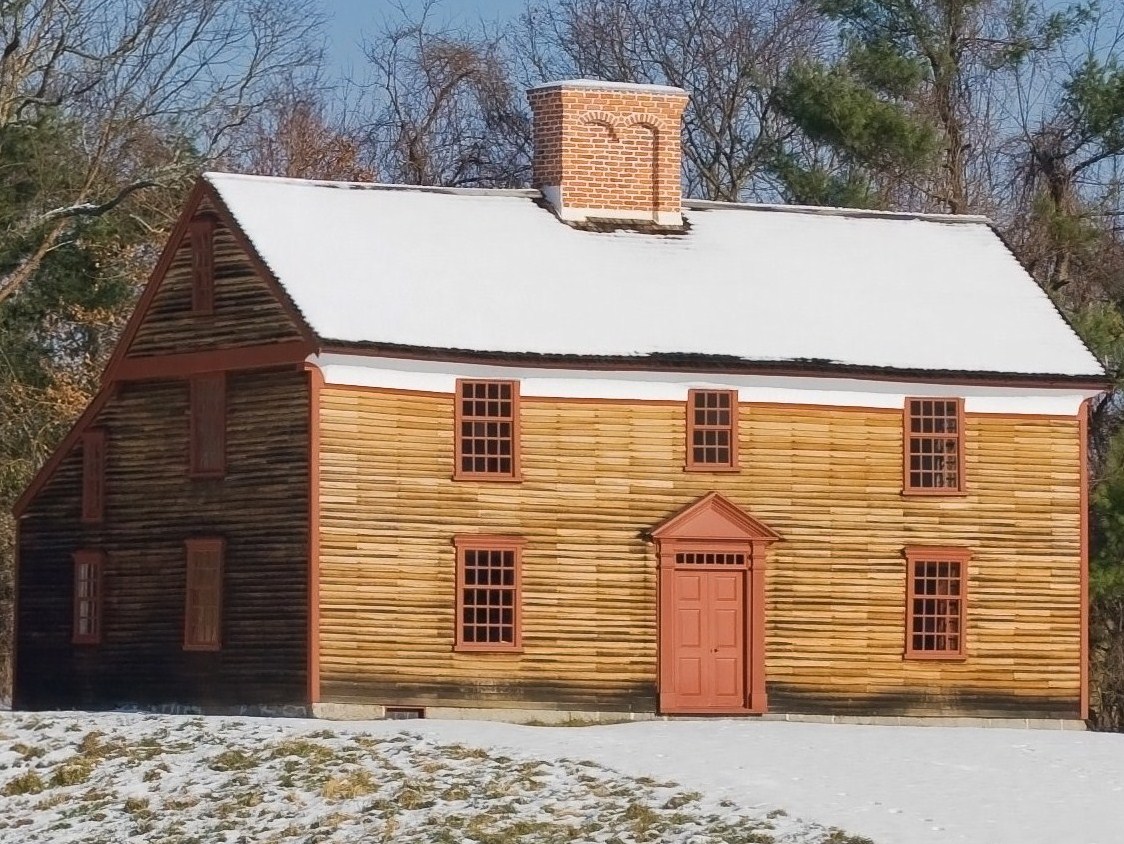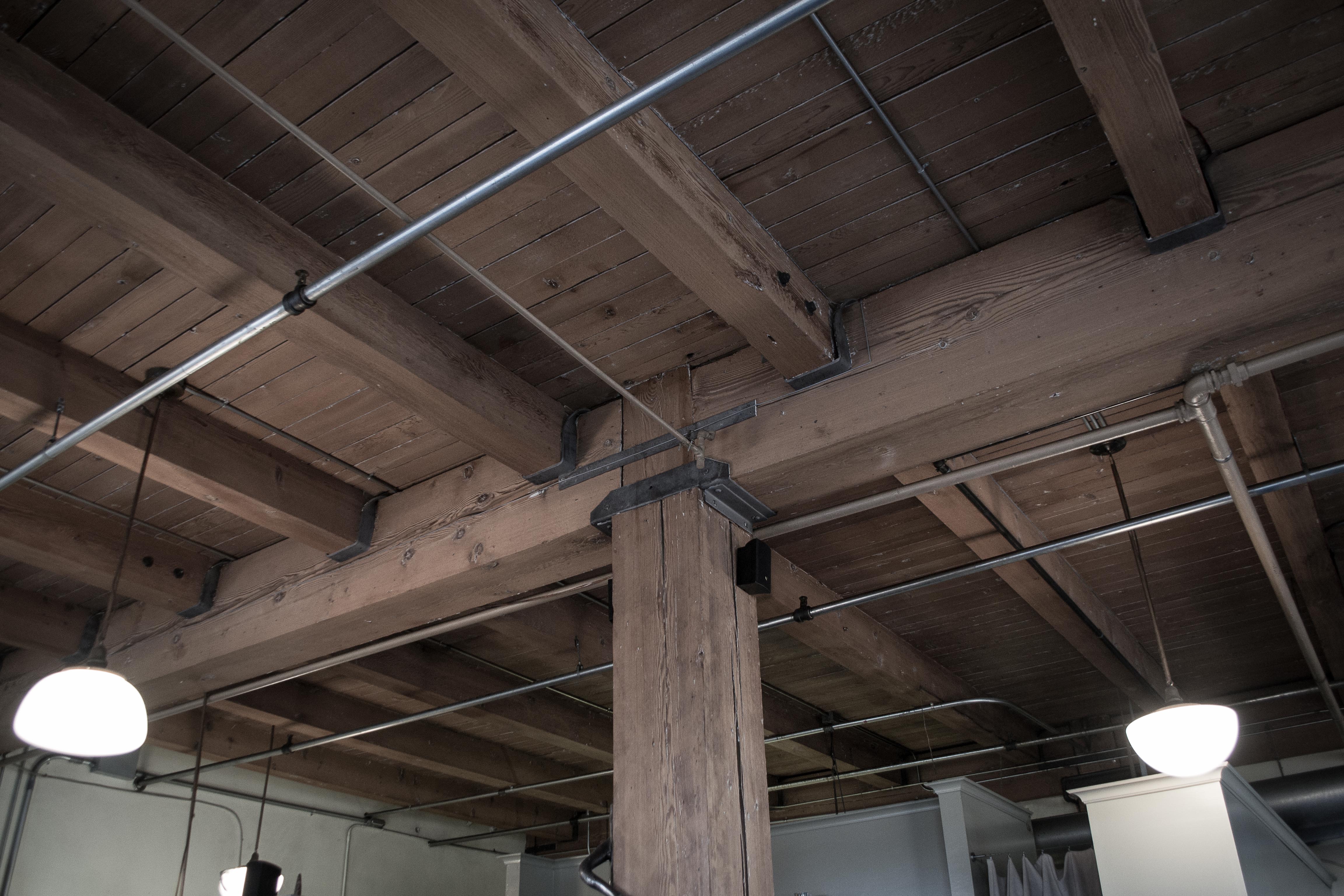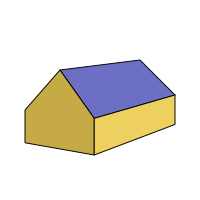|
Wodonga House
Wodonga House is a heritage-listed farmhouse at Woolooga Road, Widgee, Gympie Region, Queensland, Australia. It was built in 1902. It was added to the Queensland Heritage Register on 21 October 1992. History The former Wodonga house was constructed on its original site in 1902. The land on which it was located was first settled in 1849 when a number of runs were taken up by W B Tooth and Company. These holdings eventually developed into a cattle property known as Widgee Station. Government resumptions of Widgee Station began in 1869, and in 1877 James Meakin junior successfully applied for a 640-acre portion, which was to become Wodonga Station. In 1878 an adjoining portion was selected and further land was acquired until 1912 when Wodonga covered 1194 acres, making it one of the largest properties in the district. By January 1882, part of the holding had been transferred to James Meakin senior. The Meakins were cheese makers and also supplied produce to the residents of Gy ... [...More Info...] [...Related Items...] OR: [Wikipedia] [Google] [Baidu] |
Widgee, Queensland
Widgee is a rural locality in the Gympie Region, Queensland, Australia. In the , Widgee had a population of 794 people. History The name is believed to have originated from the Aboriginal words ''Witchee Witchee'' meaning ''listen'' or ''hark''. In 1887, of land were resumed from the Widgee Widgee pastoral run. The land was offered for selection for the establishment of small farms on 17 April 1887. Widgee Provisional School opened on 11 July 1892. It became Widgee State School on 1 January 1909. On 10 August 1912 at the Lands Office at Gympie, the Queensland Government offered for selection 48 agricultural lots in the Widgee Repurchased Estate. The lots ranged in size from , in total . 17 blocks were situated around Waroonga Creek to the north-west of Widgee Mountain () while 31 blocks were situated to south around Widgee Creek and Little Widgee Creek. The blocks were described as suitable for dairying and general farming with an average annual rainfall of . At the , Widg ... [...More Info...] [...Related Items...] OR: [Wikipedia] [Google] [Baidu] |
Veranda
A veranda or verandah is a roofed, open-air gallery or porch, attached to the outside of a building. A veranda is often partly enclosed by a railing and frequently extends across the front and sides of the structure. Although the form ''verandah'' is correct and very common, some authorities prefer the version without an "h" (the ''Concise Oxford English Dictionary'' gives the "h" version as a variant and '' The Guardian Style Guide'' says "veranda not verandah"). Australia's ''Macquarie Dictionary'' prefers ''verandah''. Architecture styles notable for verandas Australia The veranda has featured quite prominently in Australian vernacular architecture and first became widespread in colonial buildings during the 1850s. The Victorian Filigree architecture style is used by residential (particularly terraced houses in Australia and New Zealand) and commercial buildings (particularly hotels) across Australia and features decorative screens of wrought iron, cast iron "lace" or ... [...More Info...] [...Related Items...] OR: [Wikipedia] [Google] [Baidu] |
Homesteads In Queensland
Homestead may refer to: *Homestead (buildings), a farmhouse and its adjacent outbuildings; by extension, it can mean any small cluster of houses * Homestead (unit), a unit of measurement equal to 160 acres * Homestead principle, a legal concept that one can establish ownership of unowned property through living on it *Homestead Acts, several United States federal laws that gave millions of acres to farmers known as ''homesteaders'' *Homestead exemption (U.S. law), a legal program to protect the value of a residence from expenses and/or forced sale arising from the death of a spouse * Homesteading, a lifestyle of agrarian self-sufficiency as practiced by a ''modern homesteader'' or ''urban homesteader'' Named places Australia * Homestead, Queensland, a town and locality in the Charters Towers Region * The Homestead (Georges Hall, NSW), historical house * "The Homestead" resort at El Questro Wilderness Park United Kingdom * The Homestead, Sandiway, a house in Cheshire, England, ... [...More Info...] [...Related Items...] OR: [Wikipedia] [Google] [Baidu] |
Weatherboarding
Clapboard (), also called bevel siding, lap siding, and weatherboard, with regional variation in the definition of these terms, is wooden siding of a building in the form of horizontal boards, often overlapping. ''Clapboard'' in modern American usage is a word for long, thin boards used to cover walls and (formerly) roofs of buildings. Historically, it has also been called ''clawboard'' and ''cloboard''. In the United Kingdom, Australia and New Zealand, the term ''weatherboard'' is always used. An older meaning of "clapboard" is small split pieces of oak imported from Germany for use as barrel staves, and the name is a partial translation (from , "to fit") of Middle Dutch and related to German . Types Riven Clapboards were originally riven radially producing triangular or "feather-edged" sections, attached thin side up and overlapped thick over thin to shed water. [...More Info...] [...Related Items...] OR: [Wikipedia] [Google] [Baidu] |
Chamferboard
Clapboard (), also called bevel siding, lap siding, and weatherboard, with regional variation in the definition of these terms, is wooden siding of a building in the form of horizontal boards, often overlapping. ''Clapboard'' in modern American usage is a word for long, thin boards used to cover walls and (formerly) roofs of buildings. Historically, it has also been called ''clawboard'' and ''cloboard''. In the United Kingdom, Australia and New Zealand, the term ''weatherboard'' is always used. An older meaning of "clapboard" is small split pieces of oak imported from Germany for use as barrel staves, and the name is a partial translation (from , "to fit") of Middle Dutch and related to German . Types Riven Clapboards were originally riven radially producing triangular or "feather-edged" sections, attached thin side up and overlapped thick over thin to shed water. [...More Info...] [...Related Items...] OR: [Wikipedia] [Google] [Baidu] |
Adze
An adze (; alternative spelling: adz) is an ancient and versatile cutting tool similar to an axe but with the cutting edge perpendicular to the handle rather than parallel. Adzes have been used since the Stone Age. They are used for smoothing or carving wood in hand woodworking, and as a hoe for agriculture and horticulture. Two basic forms of an adze are the hand adze (short hoe)—a short-handled tool swung with one hand—and the foot adze (hoe)—a long-handled tool capable of powerful swings using both hands, the cutting edge usually striking at foot or shin level. A similar tool is called a mattock, which differs by having two blades, one perpendicular to the handle and one parallel. History Africa The adze is depicted in ancient Egyptian art from the Old Kingdom onward. Originally the adze blades were made of stone, but already in the Predynastic Period copper adzes had all but replaced those made of flint. stone blades were fastened to the handle by tying and early ... [...More Info...] [...Related Items...] OR: [Wikipedia] [Google] [Baidu] |
Rafter
A rafter is one of a series of sloped structural members such as wooden beams that extend from the ridge or hip to the wall plate, downslope perimeter or eave, and that are designed to support the roof shingles, roof deck and its associated loads. A pair of rafters is called a ''couple''. In home construction, rafters are normally made of wood. Exposed rafters are a feature of some traditional roof styles. Applications In recent buildings there is a preference for trussed rafters on the grounds of cost, economy of materials, off-site manufacture, and ease of construction, as well as design considerations including span limitations and roof loads (weight from above). Types in traditional timber framing There are many names for rafters depending on their location, shape, or size (see below). The earliest surviving roofs in Europe are of common rafters on a tie beam; this assembly is known as a "closed couple". Later, principal rafters and common rafters were mixed, which is ... [...More Info...] [...Related Items...] OR: [Wikipedia] [Google] [Baidu] |
Joist
A joist is a horizontal structural member used in framing to span an open space, often between beams that subsequently transfer loads to vertical members. When incorporated into a floor framing system, joists serve to provide stiffness to the subfloor sheathing, allowing it to function as a horizontal diaphragm. Joists are often doubled or tripled, placed side by side, where conditions warrant, such as where wall partitions require support. Joists are either made of wood, engineered wood, or steel, each of which has unique characteristics. Typically, wood joists have the cross section of a plank with the longer faces positioned vertically. However, engineered wood joists may have a cross section resembling the Roman capital letter ""; these joists are referred to as -joists. Steel joists can take on various shapes, resembling the Roman capital letters "C", "", "L" and "S". Wood joists were also used in old-style timber framing. The invention of the circular saw for use in mod ... [...More Info...] [...Related Items...] OR: [Wikipedia] [Google] [Baidu] |
Corrugated Iron
Corrugated galvanised iron or steel, colloquially corrugated iron (near universal), wriggly tin (taken from UK military slang), pailing (in Caribbean English), corrugated sheet metal (in North America) and occasionally abbreviated CGI is a building material composed of sheets of hot-dip galvanised mild steel, cold-rolled to produce a linear ridged pattern in them. Although it is still popularly called "iron" in the UK, the material used is actually steel (which is iron alloyed with carbon for strength, commonly 0.3% carbon), and only the surviving vintage sheets may actually be made up of 100% iron. The corrugations increase the bending strength of the sheet in the direction perpendicular to the corrugations, but not parallel to them, because the steel must be stretched to bend perpendicular to the corrugations. Normally each sheet is manufactured longer in its strong direction. CGI is lightweight and easily transported. It was and still is widely used especially in rural a ... [...More Info...] [...Related Items...] OR: [Wikipedia] [Google] [Baidu] |
Gympie Region
The Gympie Region is a local government area in the Wide Bay–Burnett region of Queensland, Australia, about north of Brisbane, the state capital. It is between the Sunshine Coast and Hervey Bay and centred on the town of Gympie. It was created in 2008 from a merger of the Shires of Cooloola and Kilkivan and part of the Shire of Tiaro. The Regional Council, which governs the Region, has an estimated operating budget of A$50 million. History ''Gubbi Gubbi (Kabi Kabi, Cabbee, Carbi, Gabi Gabi)'' is an Australian Aboriginal language spoken on Gubbi Gubbi country. The Gubbi Gubbi language region includes the landscape within the local government boundaries of the Sunshine Coast Region and Gympie Region, particularly the towns of Caloundra, Noosa Heads, Gympie and extending north towards Maryborough and south to Caboolture''.'' Prior to the 2008 amalgamation, the Gympie Region existed as four distinct local government areas: * the Shire of Cooloola; ** the City of Gympie; ... [...More Info...] [...Related Items...] OR: [Wikipedia] [Google] [Baidu] |
Gabled Roof
A gable roof is a roof consisting of two sections whose upper horizontal edges meet to form its ridge. The most common roof shape in cold or temperate climates, it is constructed of rafters, roof trusses or purlins. The pitch of a gable roof can vary greatly. Distribution The gable roof is so common because of the simple design of the roof timbers and the rectangular shape of the roof sections. This avoids details which require a great deal of work or cost and which are prone to damage. If the pitch or the rafter lengths of the two roof sections are different, it is described as an 'asymmetrical gable roof'. A gable roof on a church tower (gable tower) is usually called a 'cheese wedge roof' (''Käsbissendach'') in Switzerland. Its versatility means that the gable roof is used in many regions of the world. In regions with strong winds and heavy rain, gable roofs are built with a steep pitch in order to prevent the ingress of water. By comparison, in alpine regions, gable roo ... [...More Info...] [...Related Items...] OR: [Wikipedia] [Google] [Baidu] |
Gympie
Gympie ( ) is a city and a Suburbs and localities (Australia), locality in the Gympie Region, Queensland, Australia. In the Wide Bay-Burnett District, Gympie is about north of the state capital, Brisbane. The city lies on the Mary River (Queensland), Mary River, which floods Gympie occasionally. The locality of Gympie is the central business district for the city of Gympie and also the administrative centre for the Gympie Region local government area. As of June 2021, Gympie had a population of 53,851. Gympie is famous for its gold field. It contains a number of historic buildings registered on the Queensland Heritage Register. History ''Gabi-Gabi language, Gubbi Gubbi (Kabi Kabi, Cabbee, Carbi, Gabi Gabi)'' is an Australian Aboriginal language formerly spoken by the indigenous peoples of the Sunshine Coast Region and Gympie Region, particularly the towns of Caloundra, Noosa Heads, Queensland, Noosa Heads, Gympie and extending north towards Maryborough, Queensland, Marybor ... [...More Info...] [...Related Items...] OR: [Wikipedia] [Google] [Baidu] |



.png)





